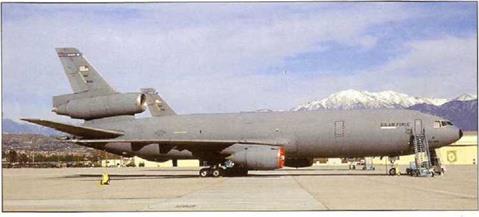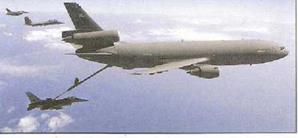|
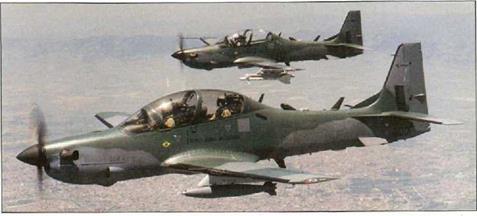
The ALX (service designation T-29/AT-29) is a radical evolution of the original Tucano design. Braid will use its aircraft to patrol the vasl Amazonian region.
|
|
evelopment of the EMBRAFR EMB-312 Tucano (Toucan) h:gh-performance turboprop trainer started in 1978 in response; to a Brazilian air force specification, First flown on 16 August 1980, the first of 133 T-27s for the FAB entered service in September 1983. Designed to provide s ‘jet-like’ flying experience, the Tucano has a single control lever governing both propeller pitch and engine throttling, ejection seats, and a staggered tandem – olace cockpit. Four underwing hardpoints can carry ordnance for weapons training.
Tucanos have been exported to Argentina (30), Colombia (14), Egypt (54), France (40), Flonduras (12). Iran (25), Iraq (84), Paraguay (6), Peru (30) and Venezuela (31). French Tucanos are the improved EMB-312F version, with an updated cockpit avionics fit. Venezuela operates an armed version of the T-27 trainer, designated AT-27.
I he Tucano’s most notable export success came in March 1985, when it won a British order for 130 aircraft to replace the RAF’s Jet Provost trainers. Considerable modifications were made to tailor the basic airframe to exacting requirements, including substituting an 820-kW (1,100-shp) Garrett TPE331- 12B turboprop – which significantly improved the rate of climb – and reprofiling the cockpit to provide
The Shorts Tucano T. Mk 1 became the RAF’s basic trainer from 1987 onwards. All RAF training aircraft are being repainted in this overall black scheme.
commonality with the BAe Hawk, EMBRAER flew’ a Garrett-engined prototype in Brazil in February 1986 and delivered this to Shorts in Belfast as a pattern aircraft. The resultant Shorts Tucano T. Mk 1 retains only 20 per cent commonality with EMBRAFR-built aircraft, The first production aircraft flew on 30 December 1986. and initial deliveries to the RAF took place in June 1988. Customers for the armed export Shorts Tucano include Kenya (12 Tucano Mk 51s) and Kuwait 116 Tucano Mk 52s) EMBRAER is currently building 99 ALX (T-29) light combat aircraft for the FAB, based on the EMB-314 Super Tucano (previously EMB-312FI Tucano H) design. The ALX is streiched by 1.37 m (4 ft 5% in) compared to the EMB-312 and fitted with a 1193-kW (1,600-hp) PT6A-68-1 turboprop. The ALX has an armoured, NVG-compatible cockpit with HUD and MFDs, five weapons hardpoints and a FUR system (two-seat version). Embraer flew a Tucano H development aircraft in September 1991. Two EMB-314 prototypes made their maiden flights on 15 May and 14 October 1993, respectively, and they now serve as the ALX development aircraft. Brazil plans to acquire between 30 and 40 two-seat AT-29s to replace its AT-26 Xavante (licence-built MB.326) advanced jet trainers.
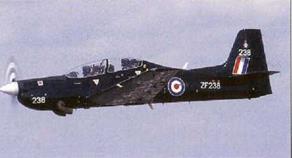
|
Specification: EMBRAER EMB-312 Tucano Powerplant: une 559-kVV (750-hp) Pratt & Whitney Canada PT6A-25C turboprop Dimensions: wring span 11.14 m (36 ч 6/ in); length 9.85 m (32 ft 4I4 in): height 340 m (11 ft YA in)
Weights: basic Empty 1870 kg (4.123 lb); max take-off 3175 kg (7,000 lb|. with stores Performance: maximum level speed 448 kmh (278 mph); maximum rate of climb at sea level 680 m (2,231 ft) per minute: service ceiling 9145 m (30,000 ft), typical range 11344 km (1,145 miles) with internal fuel; endurance about 5 hours with internal fuel Armament: four stores stations for maximum ordnance of 1000 kg (2.205 lb)
|
|
France (China) Multi-purpose helicopter
|
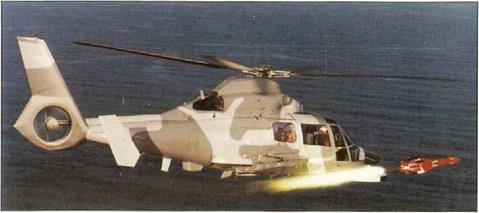
The armed AS 565SB Panther can cany four AS 15TT anti-ship missiles and is fitted with an undemose Omera ORB 32 search radar.
|
|
n the early 1970s Aerospatiale (now Eurocopter) began development of a helicopter to replace the Alouette III. The initial version, the SA 360 Dauphin, featured a four-bladed main rotor, fenestroo tail rotor, tailwheel landing gear and accommodation for a pilot and up to nine passengers. Production a:rcraft were powered by a 783-kW (1,050-shp) Astazou XVHIA. Despite the development of a military SA 361H, t was obvious that the Dauphin needed twin engines. The Arriel-powered SA 365C Dauphin 2 flew for the first time on 24 January 1975 The SA 365N introduced a retractable tricycle undercarriage, greater use of composites in the construction and other improvements.
Aerospatiale developed the SA 366G1 for a US Coast Guard requirement to replace its Sikorsky HH-52s. The HH-65A Dolphin featured many US – built components, including 507-kW (680-hp) Textron Lycoming LTS101 750A-1 engines. A Total of 101 HH-65As was delivered between 1987 and 1991.
Eurocopter went on to develop the improved AS 365IM3 Dauphin and the significantly redesigned AS 365N4 (now renamed the EC 155) Eurocopter has redesignated its military Dauphin variants on several occasions, leading to a confusing list of names and numbers. Today, two baseline versions are on offer, the army/air force AS 565UB Panther, and the armed navalised AS 565SB Panther. These designations supersede a range of earlier models including the armed AS 565AA, the anti
tank AS 565CA. the utility AS 565UA, the armed naval AS 565SA (late’ AS 565SB: and the naval utility/SAR AS 565MA (later AS 565MB).
Beginning in 1987 the Brazilian army took delivery of 36 AS 565AAs, becoming the ma|or customer for the land-based military Dauphin Interest in the nava’ version (originally AS 365F) has been stronger. In 1980 the Saudi navy ordered four SAR/surveil – lance-configured AS 365Fs (later AS 565MA) and 20 missile-armed attack-configured AS 365Ns (later AS 565SA). In 1986 Ireland took delivery of five AS 365Fs for SAR and fisheries patrol. In 1988 the French navy ordered 13 AS 565Fs for shipboard operations. In 1994 the Israeli navy ordered 20 AS 565SA Atalef (‘bat’} aircraft for a similar role.
The Dauphin is built under licence by the Harbin Aircraft Manufacturing Company (HAMC) in China, as the Z-9 Haitun (‘dolphin’). The initial production Z-9 variant was equivalent to the SA 365N and it was followed by the Z-9A (AS 365N1), the Z-9B (AS 365N2) and the Z-9G (missile-armed version for the People’s Liberation Army).
 Specification: Eurocopter AS565SB Panther Powerplant: two 835-kW (851 – hp) Turbomeca Arriel 2C turboshafts
Specification: Eurocopter AS565SB Panther Powerplant: two 835-kW (851 – hp) Turbomeca Arriel 2C turboshafts
dimensions: main rotor diameter 11 .94 in (39 ft 7 ir), lengtn overall, rotor t jrnirg 13.68 m (44 ft lUM In); height overall 3.S8 m(13 ‘t A in) Weights: empty 2281 kg (5.028 b); maximum take-eff 4250 kg (9.37C b)
Performance: maximum cruising speed at sea level 278 mill (173 mpb); maximum rate of ciimb at sea level 468 m (1,535 ft) per minute; hovering ceiling 2600 m (8,530 ft) IGE, and 2500 m (8,200 ft) 0GE, radius of action 2Б0 km (155) with four missiles Armament: four AS 15TT anti-ship missiles
Posted by admin
in AIRCRAFT on November 3, 2015
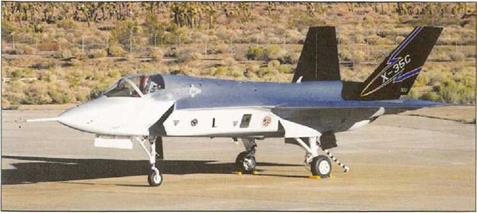
he US Joint Strike Fighter {JSF! programme is
an ambitious effort to develop a replacement for an entire generation of USAF, US Navy and US Marine Corps aircraft using ore common ‘stealthy’ airframe. The JSF is earmarked to replace the F-16, F/A-18, AV-8B and other types in the US inventory, and will also be exportable to customers worldwide. The JSF has its loots ir a number of studies for advanced, affordable combat aircraft that were launched in the early 1990s These were merged into the JAST (Joint Advanced Strike Technology) programme in 1995, which later became JSF.
Three contractors – Boeing, Lockheed Martin and McDonnell Douglas – were selected by the US DoD to submit JSF designs. In November 1996 Boeing and Lockheed Martin were chosen to build two demonstrator aircraft, essentially JSF prototypes, to conduct a Concept Demonstration Program. At the end of this period one contractor would be chosen to build its JSF design. Lockheed Martin’s CDP aircraft was given the designation X-35.
While the JSF concept demands a common airframe, there will be different versions for the three main US users. The USAF and the US Navy are looking for a conventional take-off and landing (CTOU capability, though Navy CV aircraft will have to be modified for carrier operations. The Marines need aircraft with short take-off and vertical landing (STOVL) capability to replace the Harrier, so the USMC’s JSF variant will have to have a modified
The CV-configured X 35C is similar to the CTOL X-35A, but has larger wings and empennage, a refuelling probe, re-inforced landing gear and a booh,
propu sion system, for vertical lift. Britain’s Fleet Air Arm (Royal Navy) has also signed up to acquire the STOVL JSF to replace its Sea Harriers.
Lockheed has built tnree CDP a rcraft. The CT0L X-35A the STOVL X-35B and the CV X-35C. The X-35A made Its maiden flight on 24 October 2000, the X-35C flew next on 16 December 2000. In March 2001 the X-38B completed its ‘hover pit’ testing, in preparation for its first flight. The X-35 design is more conventional than Boeing’s rival X-32, but Lockheed as adopted a completely new propulsion solution. The X 35B’s -611 STOVL engine uses a vectoring lift fan for vertical flight which can be coupled/decoup’led to/from the main engine using a gear/clutch mechanism. The engine also has a swivelling exhaust nozzle, and bifurcated intakes (between which the lift fan is positioned.
A decision date on the winning design has been delayed several times, but is now planned before the end of 2001. The first operational JSFs are expected to be the Marines’ STOVL variants in 2008. followed by the CTOL aircraft in 2010.
Lockheed Martin’s X-35 design looks very different to the the rival Boeing X-32 – but both aircraft must meet the same mission requirements.
he Douglas A-4 Skyhawk first ‘lew in prototype form on 22 June 1954, and entered service in Octobe’ 1956. It provided the US Navy end the US Marine Corps with their principal light attack platform for over 20 years Total production of all varisnts reached 2,960. Early models comprised the J65-powereo A-4A, A-4B and A-4C (differing in avionics and engine power), and the the J52- engined A-4E, and A-4F with a dorsal avionics hump. Export mode! s included the A-4G (Australia), A-4H (Israel). A-4K (New Zealand), A-4PTM (Malaysia), A-4S (Singapore) and A-4KU (Kuwait). The A-4L was a rebuilt A-4C for the USN Reserve. The ast major p’oduction model was the A-4M, based on the A-4F but with a J52-P-408A engine and new canopy. A-4lls for Israel were similar, bux featured uprated avionics, including a HUD.
Skyhawks bore the brunt of the naval air war in Vietnam, flying the most missions and suffering the heaviest osses. A-4s have also seen combat with Israel, Argentina and Indonesia.
The TA-4F two-seat variant came along late, but was used first as a FAC by the USMC and later as the main jet trainer for the USN. It features two cockpits in tandem with a single canopy. The USMC’s OA-4IVI was a specialised two-seater used
Argentina acquired 32 rebuilt and upgraded A-4ARs between 1997 and 2000. They are fitted with a version of the APG-66 multi-mode radar, theARG-1.
for FAC duties. The definitive TA-4J trainer was a simplried TA-4F which usually lacked cannon armament and combat capability. The last USN Training Command A-4s were retired in 1999, but one squadron retains TA-4Js for adversary and fleet support duties.
Although Australia. Malaysia and Kuwait have retired their A-4s, the other export users continue to operate them. New Zealand bougntthe remaining A-4Gs and upgradec them with the APG-66 raoar, new avionics, AIM-9L Sidewinder and Maverick – missile capabi ity, under project Kahu. The Argentine air force bought surplus A-4/OA-AMs and also upgraded them as the A-4AR Fightinghawk, Brazil bought the former-Kuwaiti T/A-4KUs for service on its recently acquired former-French aircraft carder Foch (now renamed Sao Paulo) as the AF-1A and AF-1B.
Singapo’e has the most highly modified Skyhawks, having upgraded surplus A-4B/Cs as A-4Ss and TA-4Ss trainers with seperate rear canopes. These aircraft were first upgraded to T/A-4S-1 Super Skyhawk standard, re-engined with the GE F404 turbofan. A follow-on upgrade brought them up to T/A-4SU Super Skyhawk standard, with a new digital avionics suite.
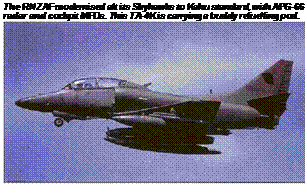 Specification: McDonnell Douglas A-4M Skyhawk II Specification: McDonnell Douglas A-4M Skyhawk II
Powerplant: one 50-kN (11.280-lb) Pratt & Whitney J52-P-40S non-afterburning turbojet Dimensions: w ig span 8.38 m (27 ft б in); lennth 12.72 m (41 ft 8M in) height 457 m (14 ft Ш inf
Weights: operating amply 4747 kg (10,250 lb): maximum Luke-off і0206 kg 124,COO lb) Performance: maxinun level spaed 1102 knrh 685 rriph); service uei ing 12190 m (40.000 ft); combat radius 547 km (346 miles! with a 18′ 4-kg (4,000-lb) war bad Armament: two h/k 12 20-ГЛГП cannon, maximum ordnance 4153 kg (9,155 lb)
(( _ _ United States
Posted by admin
in AIRCRAFT on November 3, 2015
|
Naval ASW, ASuV, AEW, SAR and utility helicopter

The Royal Navy (and Royal Marines) rely on the Sea King HC. Mk 4, better known as the Commando, as its primary assault transport.
|
|
our Sikorsky-built S-61s were shipped to Westland in 1966 as pattern aircraft for the Royal Navy’s licence-produceo Sea King HAS. Mk 1 Flying on 7 May 1969, it had British avionics and ASW systems, including search radar, sonar, Doppler and bathythermographic equipment, and AFCS. Weapons included Mk 44 torpedoes, Mk 11 depth charges or a WE177 nuclear depth bomb. The 56 RN HAS. Mk Is were followed by 21 HAS. IVIk 2s (and 37 conversions) with uprated engines, six-bladed tail rotors and intake deflector/filters. The withdrawal of HMS Ark Royal left the Royal Navy without shipbome AEW cover, and nine HAS. Mk 2s were converted to Sea King AEW. Mk 2 standards, with a Searchwater radar with a retractable radome in an inflatable radome. Three similar AEW radar systems were sold to Spain for the conversion of three US-built Spanish navy SH-3H Sea Kings. The surviving AEW Sea Kings are now being upgraded to AEW. Mk 7 standard. with a new puise-Doppler multi-mode radar, new mission computer, JTlDSand IFF.
The Sea King HAS. Mk 5 (85 produced, some 55 by conversion of HAS. Mk 2s) featured Sea Searcher radar, improved processing and Orange Crop ESM. The HAS. Mk 6 has an integrated sonar processor, deep water dipping sonar, and Orange Reaper ESM. Five new-build HAS. Mk 6s followed the prototype (a converted HAS. Mk 5) and 69 conversion kits were supplied to RNAY Fleetlands.
The similar Advanced Sea King was developed specifically for export, India buy:ng 12 Sea Eagle- compatible Sea King Mk 42Bs and six SAR-config – ured Sea King Mk 42Cs.
About half a dozen Royal Navy HAS. Mk 5s were stripped of ASW equipment for use in the SAR role as HAR. Mk 5s, while 19 dedicated Sea King HAR. Mk 3 SAR aircraft were delivered to the RAF Six more HAR. Mk 3As were ordered in February 1992, equipped to an even higher standard, with a new radar, a new AFCS and improved nav systems and radios. ASW and SAR Sea Kings were exported to Australia, Belgium. Egypt, Germany, India, Norway, and Pakistan/
Development of an assault/tactical transport Sea King began in mid-1971, resulting in the Westland Commando No interest was initially expressed by the UK, but Egypt and Qatar placed orders. RN interest began in 1978, as a replacement for the Wessex. Forty-one Commando HC. Mk 4s were procured for the RN. Two similar Sea King Mk 4Xs were built for the RAE as test aircraft.
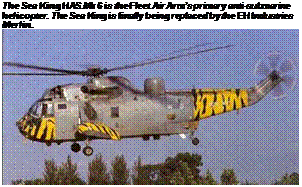 Specification: Sea King HAS. Mk 6 Powerplant: wo 1238-kWfl,660-hp) Ro Is Rcyce Gnome H.1400-1T turboshafts Dimensions: main rotor diameter 18.80 m (62 ft}; length overall, rolors turning 22 15m (72 It 8 in), fuselage 17.02 m{55 ft 10 in); height overall 5.13 m (16 ft 10 in) with rotors turning Specification: Sea King HAS. Mk 6 Powerplant: wo 1238-kWfl,660-hp) Ro Is Rcyce Gnome H.1400-1T turboshafts Dimensions: main rotor diameter 18.80 m (62 ft}; length overall, rolors turning 22 15m (72 It 8 in), fuselage 17.02 m{55 ft 10 in); height overall 5.13 m (16 ft 10 in) with rotors turning
Weights: empty equipped 7428 kg (16,377 Ibl; maximum take-off 9752 kg (21.500 lb) Performance: maximum cruising speed 204 kmh (126 mph); maximum rate of climb at sea level 619 m (2.030 ft) per minute;
Posted by admin
in AIRCRAFT on November 3, 2015
|
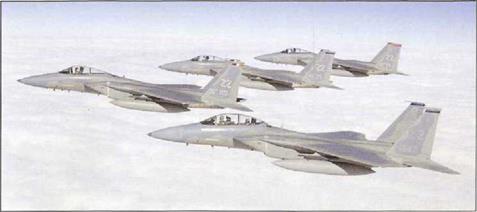
This mix of F-15Cs (and a single F-15D) are from the two Eagle squadrons of the Kadena AFB-based 18th Wing, one of PACAF’s key units.
|
|
he McDonnell Douglas-designed F-15 Eagle is viewed as the world’s best air superiority fighter and interceptor, particularly in the BVR [beyond visual range) air-to-air mission. It was designed for the USAF’s 1966 FX requirement which called for a long-range air superiority fighter to replace the F-4. McDonnell won that competition and flew a prototype F-15 A on 27 July 1972, followed by a prototype F-15B two-seat trainer in July 1973.
The F-15 has an advanced aerodynamic design with large lightly-loaded wings conferring high agility. It features a sophisticated avionics system and its APG-63 radar introduced a genuine look-down/ shoot-down capability. Radar-guided AIM-7 AAMs form the primary armament, augmented by AIM-9 AAMs. While still in use. the AIM-7 has now been superseded by the far more capable AIM-120 AMRAAM. The USAF is also preparing to introduce the latest AIM-9X off-boresight short-range missile.
The USAF received 360 production F-l5As and 58 F-15Bs from 1976. Most remaining F-15A/Bs now serve with ANG units. The only foreign F-15A/B operator is Israel, which currently operates a force of about 50 A/Bs.
The F-15C, an improved and updated F-15A, was the definitive production version. The two-seat F-15D was a similarly-improved F-15B. First flying on 26 February 1979, the F-15C introduced uprated F100 engines and provision for conformal fuel tanks (CFTs). initial deliveries were made in September
1979 and F-15C/Ds later replaced F-15A/Bs with three wings. The F-15 Multistage lmprovement Program’ was initiated in February 1983, with the first production MSIP F-15C produced in 1985. Improvements included an upgraded central computer, a Programmable Armament Control Set, allowing for advanced versions of the AIM-7, AIM-9, and AIM-120A missiles, and an expanded Tactical Electronic Warfare System that provides improvements to the ALR-56C radar warning receiver and ALQ-135 countermeasure set. The final 4-3 were fitted with a Hughes APG-70 radar.
F-15C/Ds were delivered to the USAF (408/62), Israel (18/9) and Saudi Arabia (98). The equivalent F-15J/DJ is Japan’s principal air superiority fighter. Most of the JASDF’s 213 planned Eagles have been assembled under licence by Mitsubishi.
The USAF is now fitting all its F-15A/Cs with the upgraded APG-63(V)1 radar. The first of these aircraft entered service in April 2001. During 2000, 18 special F-15Cs were fitted with the APG-63(V}2 Active Electronically Scanned Array (AESA) radar.
A yellow fin stripe marks this F-15C as an aircraft from the 2nd Fighter Squadron, 325th Fighter Wing, based at Tyndall AFB, in Florida.
 Specification: Boeing F-15C Eagle Rowe rp I ant: two 106.0-Ш (23,830-lb) Pratt & Whitney FI OD-P-220 turbofans Dimensions: span 13.05 m (42 ft 10 in); length 19.43 m |63 ft 9 in); height 5.63 n {18 ft 5/ in) Weights: operating empty 12793 kg 128.600 lb); normal lake-oil 20244 kg (44,630 Ibi; maximum take-off 30844 kg 168.000 lb), with CFTs Performance: maximum level speed more than 2655 kmh (1.650 mph); maximum rate of climb at sea level more [ban 15240 ш 150,000 ft) per minute: service ceiling 18290 m (60.000 ft); combat radius 1967 km (1.222 miles) (interception mission) Specification: Boeing F-15C Eagle Rowe rp I ant: two 106.0-Ш (23,830-lb) Pratt & Whitney FI OD-P-220 turbofans Dimensions: span 13.05 m (42 ft 10 in); length 19.43 m |63 ft 9 in); height 5.63 n {18 ft 5/ in) Weights: operating empty 12793 kg 128.600 lb); normal lake-oil 20244 kg (44,630 Ibi; maximum take-off 30844 kg 168.000 lb), with CFTs Performance: maximum level speed more than 2655 kmh (1.650 mph); maximum rate of climb at sea level more [ban 15240 ш 150,000 ft) per minute: service ceiling 18290 m (60.000 ft); combat radius 1967 km (1.222 miles) (interception mission)
Armament: one M61 20-mm cannon with 940 rounds; maximum ordnance 7257 kg [16,000 lb)
Posted by admin
in AIRCRAFT on November 3, 2015
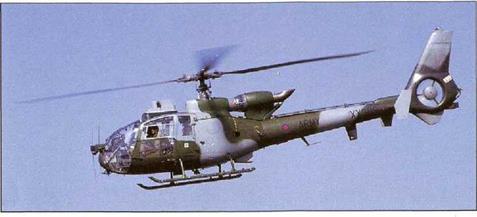
The British Army Air Corps’ Gazelle AH. Mk 1s continue to give sterling service, operating as scouts for the TOW-armed Lynx attack helicopters
|
|
uccessor to The ubiquitous Sud Alouette II, the Aerospatiale (now Eurocopter) Gazelle originated in a mid-1960s project oy Sud Aviation. Despite using many of its predecessor’s dynamic systems (includ:ng the 268-kW (360-shp) Astazou II power – plant), the X.300 design, soon renamed SA 341, achieved increased speed and manoeuvred lity through adoption of a more powerful turboshaft, aerodynamically-shaped cabin and covered tail – boom, and advancec rotor technology. The Gazelle used a rigid main rotor head, glass-fibre blades and the revolutionary ‘fenestron’ or fan-in-fin tail rotor. The SA 340 prototype flew on 12 April 1968 with non-standard conventional rotors. The revised SA 341 Gazelle incorporated the new rotor technology, and introduced a longer cabin, larger tail surfaces and a 440-kW (590-shp) Astazou III.
Six versions were launched initially: SA 341B (British Army Gazelle AH. Mk 1>, SA 3410 (Royal Navy HT. Mk 2 trainer); SA 341D (RAF HT. Mk 3 trainer); SA 341E (RAF HCC. Mk 4 VIP transport} – all with the Astazou INN: SA 341F (French army – ALAT) with Astazou NIC; and military export SA 341 FI. In the UK, Westland built 294 Gazelles, including 212 AH. Mk is. Generally unarmed, they carried rockets during the 1982 Faiklands War,
wh le nearly 70 were fitted with target-finding magnryirg sights for missi e-armed Lynxes, during the late 1980s. Of 170 SA 341 Fs. ALAT converted 40 to carry four HOT ATGMs as SA 341Мз anc 62 with a GIAT M621 20-mm cannor and SFOM 80 sight as the SA 34lF/Canon. Others have acquired an Athos scouting sight.
Powered by a 640-kW (858-shp) Astazou XIVH, the SA 342 replaced the SA 341 Foreign exports began with the military SA 342K, the latter soon replaced by SA 342Ls with an improved fenestron The ALAT equivalent is designated SA 342M and over 200 have been deliverec since 1980, typically armed with four HOT missiles arc fitted with an M397 sight.
During the 1991 Gulf War, 30 i-rench SA 342Ms were converted to SA 342M/Celtic standard, fitted with two Mistral air-to-air missiles and a SFOM 80 sight. This interim model has been replaced ny the definitive SA342ML1/ATAM ant-helicopter model This version is armed with four Mistrals ano a T2000 sight, and 36 Gazelles have been thus converted. The ALAT is also upgrading 70 of its at:ack-configured AS 342Ms to AS 342M1 Viviane standard, through the addition of the Viviane thermal – imaging sight, with a laser rangefinder.
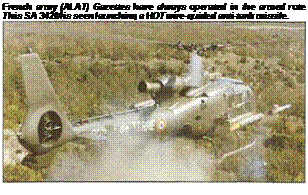 Specification: Eurocopter SA 341F Gazelle Powerplant: one 440-kW (590-hp) Turbomfica Astazou IMA
Specification: Eurocopter SA 341F Gazelle Powerplant: one 440-kW (590-hp) Turbomfica Astazou IMA
Dimensions: шзіп rotor diameter 10.50 m 134 ft 54 in); engtli overs!. rotor turning 11.97 n I39 fl 3 in) and fuselage 9.53 m (31 ft 3 in}: height overall 3.18 m (10 ft э25 in Weights: empty 920 kg (2,928 lb}: maximum take-off 1800 <g (3,968 lb)
Performance: maximum cruising speed 264 krrh [134 mph); maximum rate of climb at sea level 540 m (1,770 ft) per minute, service ceiling 5030 rri (16,405 It), hovering ceiling 2650 m (9.350 It) iCit: range 670 krr [416 mi es| Armament: maximum payload 700 kg (1,540 lb)

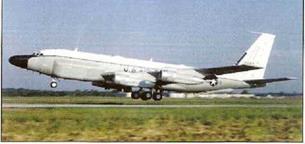













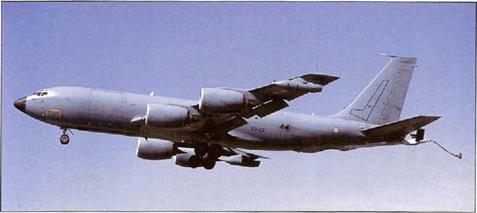



 Specification: Eurocopter AS565SB Panther Powerplant: two 835-kW (851 – hp) Turbomeca Arriel 2C turboshafts
Specification: Eurocopter AS565SB Panther Powerplant: two 835-kW (851 – hp) Turbomeca Arriel 2C turboshafts

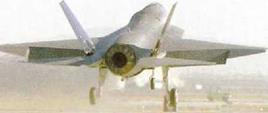
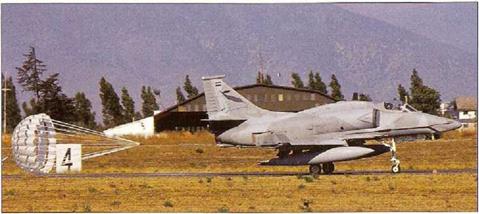
 Specification: McDonnell Douglas A-4M Skyhawk II
Specification: McDonnell Douglas A-4M Skyhawk II
 Specification: Sea King HAS. Mk 6 Powerplant: wo 1238-kWfl,660-hp) Ro Is Rcyce Gnome H.1400-1T turboshafts Dimensions: main rotor diameter 18.80 m (62 ft}; length overall, rolors turning 22 15m (72 It 8 in), fuselage 17.02 m{55 ft 10 in); height overall 5.13 m (16 ft 10 in) with rotors turning
Specification: Sea King HAS. Mk 6 Powerplant: wo 1238-kWfl,660-hp) Ro Is Rcyce Gnome H.1400-1T turboshafts Dimensions: main rotor diameter 18.80 m (62 ft}; length overall, rolors turning 22 15m (72 It 8 in), fuselage 17.02 m{55 ft 10 in); height overall 5.13 m (16 ft 10 in) with rotors turning
 Specification: Boeing F-15C Eagle Rowe rp I ant: two 106.0-Ш (23,830-lb) Pratt & Whitney FI OD-P-220 turbofans Dimensions: span 13.05 m (42 ft 10 in); length 19.43 m |63 ft 9 in); height 5.63 n {18 ft 5/ in) Weights: operating empty 12793 kg 128.600 lb); normal lake-oil 20244 kg (44,630 Ibi; maximum take-off 30844 kg 168.000 lb), with CFTs Performance: maximum level speed more than 2655 kmh (1.650 mph); maximum rate of climb at sea level more [ban 15240 ш 150,000 ft) per minute: service ceiling 18290 m (60.000 ft); combat radius 1967 km (1.222 miles) (interception mission)
Specification: Boeing F-15C Eagle Rowe rp I ant: two 106.0-Ш (23,830-lb) Pratt & Whitney FI OD-P-220 turbofans Dimensions: span 13.05 m (42 ft 10 in); length 19.43 m |63 ft 9 in); height 5.63 n {18 ft 5/ in) Weights: operating empty 12793 kg 128.600 lb); normal lake-oil 20244 kg (44,630 Ibi; maximum take-off 30844 kg 168.000 lb), with CFTs Performance: maximum level speed more than 2655 kmh (1.650 mph); maximum rate of climb at sea level more [ban 15240 ш 150,000 ft) per minute: service ceiling 18290 m (60.000 ft); combat radius 1967 km (1.222 miles) (interception mission)
 Specification: Eurocopter SA 341F Gazelle Powerplant: one 440-kW (590-hp) Turbomfica Astazou IMA
Specification: Eurocopter SA 341F Gazelle Powerplant: one 440-kW (590-hp) Turbomfica Astazou IMA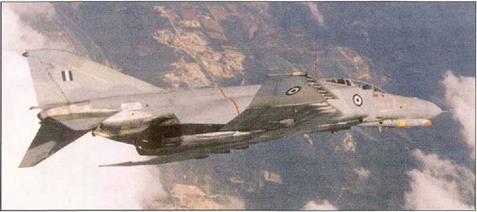
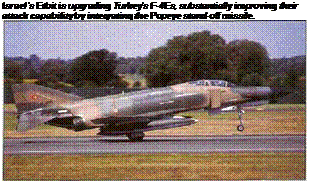 Specification: McDonnell Douglas F-4E Phantom II
Specification: McDonnell Douglas F-4E Phantom II
 Specification: Boeing F-15E Eagle Powerplant: wo 129.45-kN (29.100-lb)
Specification: Boeing F-15E Eagle Powerplant: wo 129.45-kN (29.100-lb)
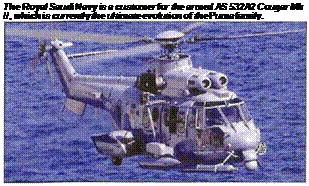 Specification; Eurocopter AS 532A2 Cougar Powerplant two 1235-kW 11,657 hp) ТигЬотбоа Makila 1A2 turoosliafts Dimensions: main rotor diameter 16.20 m (53 ft 1У in); length overall, rotors turning ‘9.5 in (03 It V in) and fuselage ‘5.79 m (55 ft A in); height overall 4.97 n П 0 ft 4 in) Weights: empty 5П12 kg |11,05(1 lh); maximum take-off 11340 kg (25,Out) lb| Performance: тахітіїїт cruising speed 277 kmh (172 mph). maximum rate of climb at sea level 441 m (1,447 ft) ner minute; service cei ing 5’ 80 m {17,090 ft); hovering celling 2699 m (8.320 fll in ground effect and 1=00 n (B,24G ft| nut nf ground efffic:; mnge 926 km (575 mites)
Specification; Eurocopter AS 532A2 Cougar Powerplant two 1235-kW 11,657 hp) ТигЬотбоа Makila 1A2 turoosliafts Dimensions: main rotor diameter 16.20 m (53 ft 1У in); length overall, rotors turning ‘9.5 in (03 It V in) and fuselage ‘5.79 m (55 ft A in); height overall 4.97 n П 0 ft 4 in) Weights: empty 5П12 kg |11,05(1 lh); maximum take-off 11340 kg (25,Out) lb| Performance: тахітіїїт cruising speed 277 kmh (172 mph). maximum rate of climb at sea level 441 m (1,447 ft) ner minute; service cei ing 5’ 80 m {17,090 ft); hovering celling 2699 m (8.320 fll in ground effect and 1=00 n (B,24G ft| nut nf ground efffic:; mnge 926 km (575 mites)